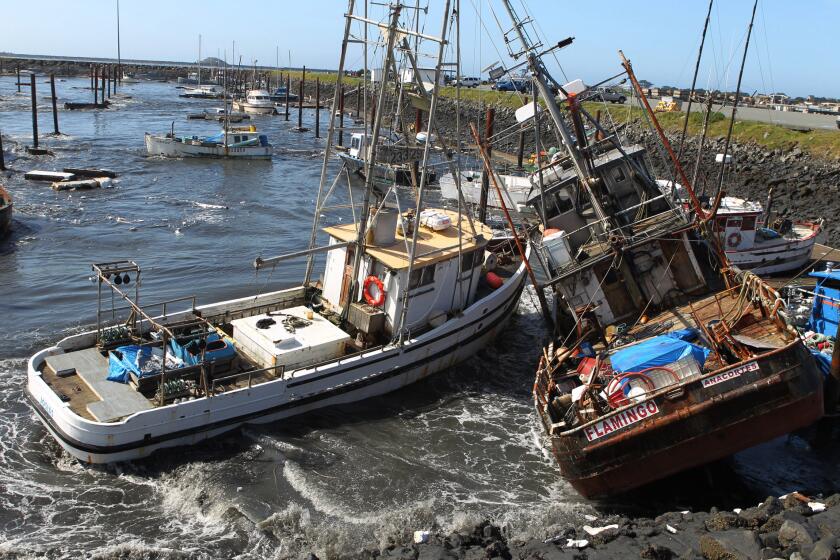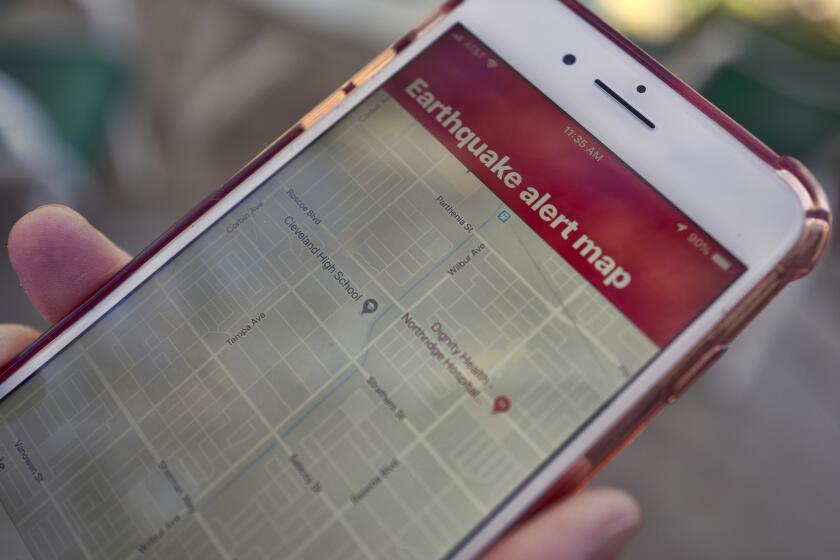Scientists to Examine Scenarios for Quakes
- Share via
Aiming to contribute sound scientific data to the growing debate over how adequate state building codes are when it comes to earthquakes, researchers will use federal grant money to simulate a dozen new Southland quake scenarios, including at least three in the Los Angeles area.
The scenarios--including shaking intensities for 7.25 and 6.75 temblors on the Elysian Park fault near downtown--may show that the codes provide only “a minimum threshold” of safety, said David D. Jackson, scientific director of the Southern California Earthquake Center.
These will predict such critical seismic data as peak ground accelerations, amplitudes and the durations of shaking, in what will amount to engineering reports on the size and nature of the prospective dozen “plausible” quakes, Jackson said.
The Southern California Earthquake Center, which is based at USC but employs the efforts of many scientists through the region, has received a new five-year commitment of $20 million: $15 million from the National Science Foundation and $5 million from the U.S. Geological Survey.
Jackson and center director Tom Henyey said the priorities will be:
* The third evaluation since 1988 of the probabilities of quakes over the next 30 years along all of the Southland’s main known faults.
* Using the scenarios to describe what these quakes will do.
* Letting the public know what it finds.
Henyey said the center will try to reduce the uncertainties of the latest probability analysis, released in 1995, which projected an 86% chance of an earthquake of magnitude 7.0 or larger occurring somewhere in Southern California by 2024.
The first two analyses reflect a long struggle to consensus by Earthquake Center scientists. But disagreements remain.
One controversy in 1995 was over the scaling down of the 30-year likelihood of a big quake on the Coachella Valley segment of the San Andreas fault, from 40% to 22%.
At the same time, the chance of a quake of magnitude 7 or greater on the San Bernardino Valley segment of the San Jacinto fault was raised from 20% to 37%.
Allan Lindh, a prominent Northern California staffer for the U.S. Geological Survey, said last week that he hopes the original high probability assessment of the Coachella Valley will be restored.
“The last event in the Coachella Valley was in 1680,” he said. “We know it’s got to go, it’s ready to go. It was insane to change the probabilities downward to such an extent.”
But Jackson is a leading exponent of a view among some scientists that within any given time frame, big quakes are less likely to occur in regions of so-called seismic gaps, where no major quakes have occurred in centuries, than in more seismically active regions.
Meanwhile, with information recorded from the heavily monitored Northridge earthquake, Henyey and Jackson believe it is now possible to develop much more precise scenarios than in the past.
These, the two said, may strongly indicate that the current building code standard, which foresees a general 10% probability of shaking at the level of 40% the force of gravity within the next 50 years, may be too low.
Northridge shaking intensities were often far higher, reaching up to 180% of gravity in Tarzana, for example.
Caltech engineering seismology professor Thomas H. Heaton said scientists are looking forward to what the scenarios reveal about even stronger quakes.
More to Read
Sign up for Essential California
The most important California stories and recommendations in your inbox every morning.
You may occasionally receive promotional content from the Los Angeles Times.










